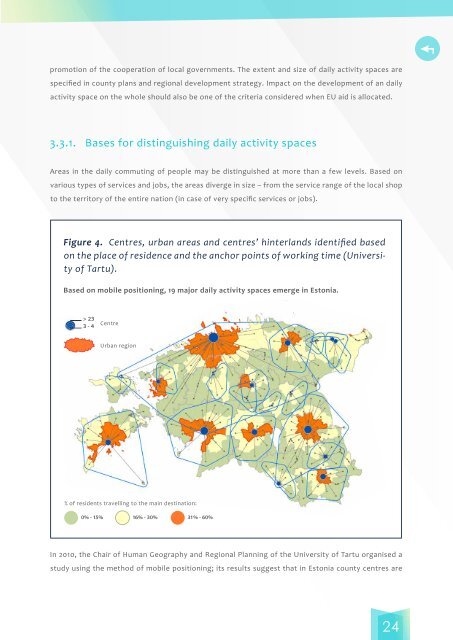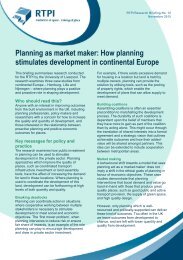estonia-2030_en
estonia-2030_en
estonia-2030_en
You also want an ePaper? Increase the reach of your titles
YUMPU automatically turns print PDFs into web optimized ePapers that Google loves.
promotion of the cooperation of local governm<strong>en</strong>ts. The ext<strong>en</strong>t and size of daily activity spaces arespecified in county plans and regional developm<strong>en</strong>t strategy. Impact on the developm<strong>en</strong>t of an dailyactivity space on the whole should also be one of the criteria considered wh<strong>en</strong> EU aid is allocated.3.3.1. Bases for distinguishing daily activity spacesAreas in the daily commuting of people may be distinguished at more than a few levels. Based onvarious types of services and jobs, the areas diverge in size – from the service range of the local shopto the territory of the <strong>en</strong>tire nation (in case of very specific services or jobs).Figure 4. C<strong>en</strong>tres, urban areas and c<strong>en</strong>tres’ hinterlands id<strong>en</strong>tified basedon the place of resid<strong>en</strong>ce and the anchor points of working time (Universityof Tartu).Based on mobile positioning, 19 major daily activity spaces emerge in Estonia.> 233 - 4C<strong>en</strong>treUrban region% of resid<strong>en</strong>ts travelling to the main destination:0% - 15% 16% - 30% 31% - 60%In 2010, the Chair of Human Geography and Regional Planning of the University of Tartu organised astudy using the method of mobile positioning; its results suggest that in Estonia county c<strong>en</strong>tres are24




